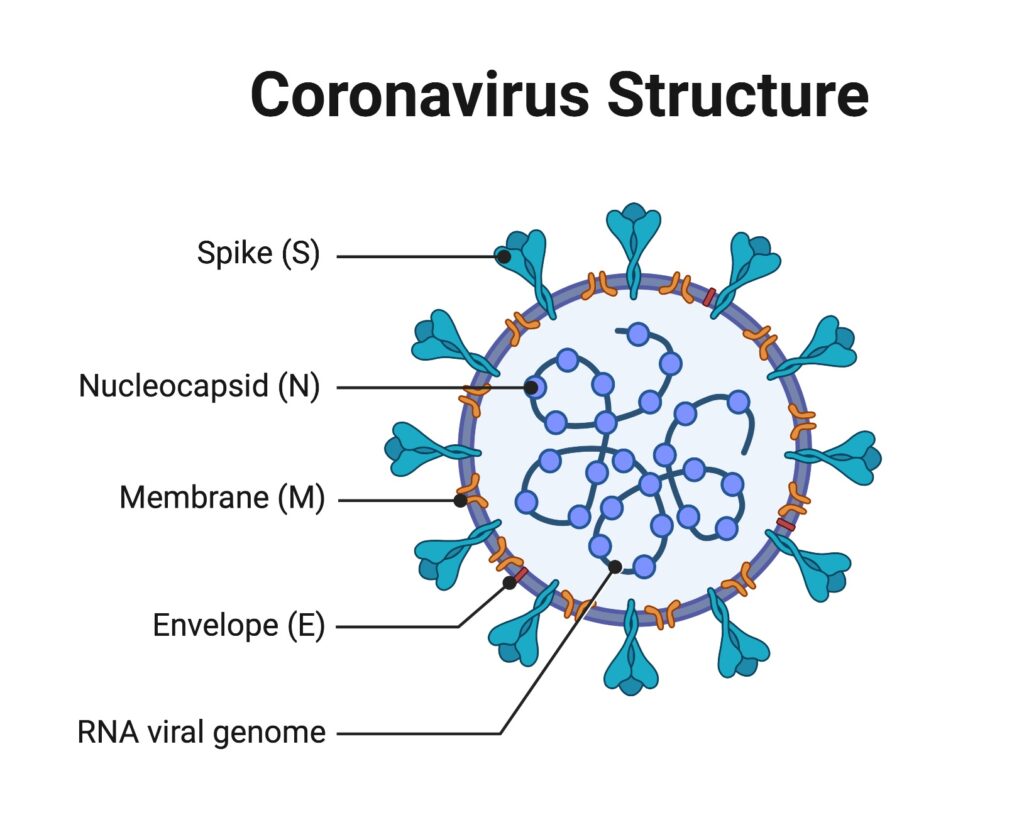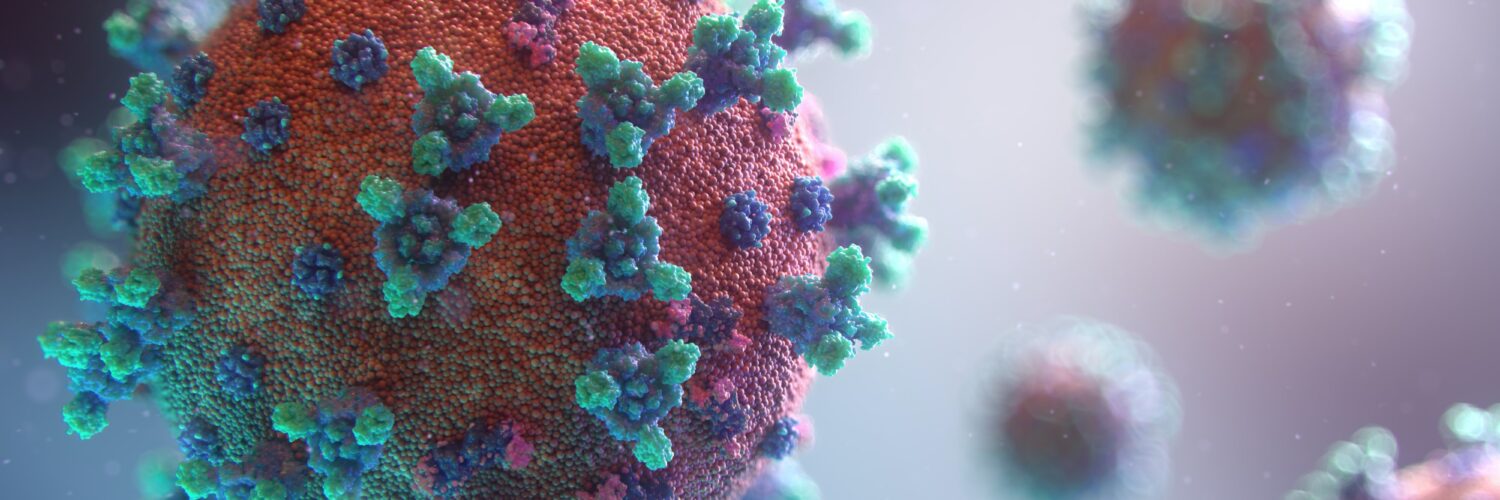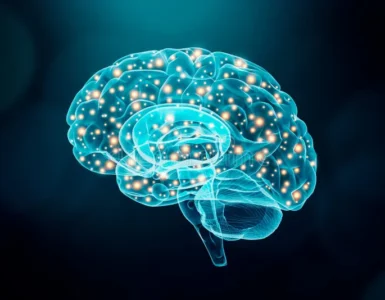With the COVID-19 pandemic, we have heard a lot of viruses of late. Many are confused – are they living or non-living? Can we kill the COVID-19 virus? This confusion has been around for a long time, and many people are unsure of what they are. Some of us are confused between viruses and bacteria, with a handful even taking antibiotics to cure their viral infections. Trust me; you do not want to try that out.
That said, I would like to give a disclaimer before we begin – even scientists do not know the answer to this question. Viruses exhibit both living and non-living characteristics. “How?” you may ask. Before we discuss what makes scientists debate whether they are living or not, we will first talk about what viruses are.
What is a virus?
Viruses are agents that replicate by infecting living cells. They are sub-microscopic and are usually between 20 nm to 300 nm in diameter. Of course, there are exceptions since giant viruses larger than some cells exist. Viruses with a lipid envelope outside their protein coat are known as enveloped viruses, and those without are called naked viruses.
While some may contain a lipid envelope around their capsid coats, all viruses are made up of nucleic acids and proteins. Viruses also lack a cytoplasm or organelles and are non-cellular, and their genes are located within the capsid coat.
Earlier, we mentioned that viruses replicated by infecting living cells, and this is due to the lack of cellular functions enabling them to replicate on their own. As such, they have to infect living cells to hijack their cellular functions. This is done via either the lytic or the lysogenic cycle, which kills the host cells in the process. Viruses are thus obligate intracellular parasites since they infect both prokaryotic and eukaryotic cells.
Structure of viruses

Central core
The most important aspect of a virus is its genome. The central core of nucleic acid contains viral genes which produce various virus proteins. These proteins are used as part of the capsid coat and lipid envelope, should they have one. The capsid coat may contain other proteins to stabilise the viral genome. Viral enzymes are also produced for the reproduction of the virus.
As mentioned earlier, the central core is surrounded by the capsid coat. Viruses may contain either DNA or RNA as part of their genome. You might be surprised to find out that single-stranded DNA and double-stranded RNA exists in viruses! Aside from that, the nucleic acid may be linear or circular. They can also exist independently, as a set of different molecules or multiple sets of identical molecules.
Capsid coat
We sure have talked a lot about the capsid coat, but we have yet to discuss what exactly they are. The capsid coat is made up of capsomeres, a type of protein, and it contains the viral genome to form nucleocapsid. For naked viruses, the capsid coat also reflects the shape of the virus.
In terms of its function, the capsid coat primarily protects the nucleic acid from being damaged. It also allows the virus to be attached to receptors on the host cell, which is done via the special sites on the capsid coat. The capsid coat also allows the virus to penetrate the cell surface membrane of the host or even inject its genome into the host cell’s cytoplasm.
Lipid envelope
The lipid membrane envelope is made up of phospholipids and cholesterol, and this is taken from the cell surface membrane of the host cells where viruses first bud. Many contain a lipid envelope, and this includes the HIV and the influenza virus.
While the lipid envelope often originates from the host cell, the virus can inject proteins into it, and this makes it appear as glycoprotein spikes, which aims to attach the virus to the host cell’s receptors. As we mentioned earlier, those with lipid envelopes are known as enveloped viruses.
Viruses – Living or Non-Living
Now that we know a little about what viruses are and what they are made up of, it is time for us to discuss their status as living organisms. However, we must first define what the characteristics of a living organism are.
Characteristics
- Can reproduce
- Display heredity controlling their growth and development
- Display order via organised structures
- Evolve and adapt based on their environment
- Exhibit metabolism – gaining, processing, and using energy
- Respond to stimuli from the external environment
- Show homeostasis, sustaining a constant internal environment
Viruses – Living Characteristics
Firstly, viruses can reproduce within host cells, meeting the first characteristic. This is done by directly controlling the functions of the cell. They contain either DNA or RNA genomes, which allows them to exhibit inheritance, and this meets the second characteristic. On top of that, they are also able to evolve due to spontaneous mutations.
As viruses are made up of a capsid coat, which allows them to have an organised structure, this satisfies the third characteristic mentioned above. They can respond to external signals in the lysogenic cycle, enabling them to reproduce within the host cell. This essentially meets the sixth characteristic.
Viruses – Non-Living Characteristics
Even though we mentioned that viruses had met the first characteristic, they cannot reproduce by themselves. As such, they are only intracellular parasites, and it does not prove that they are living. Viruses are also unable to generate energy for their use. As such, they are unable to carry out metabolism, challenging the fifth characteristic.
Viruses also lack sensory mechanisms and response functions, challenging the sixth characteristic. As they do not contain any internal functions, they are unable to maintain homeostasis. They also do not contain a cytoplasm, so no internal environment needs to be sustained. As such, the seventh characteristic shows that viruses have non-living characteristics.
Cell theory
The cell theory states that:
- All living organisms are made up of one or more cells
- Cells are the smallest and most basic units of life
- Cells reproduce from pre-existing cells
On top of its living-or-non-living debate, viruses also challenge the cell theory. The most obvious characteristic is that they are non-cellular, and they are smaller and have a simpler structure than viruses. Similarly, they do not reproduce from pre-existing cells since they are not cells themselves. However, they reproduce by infecting host cells and using the hosts’ functions and materials to reproduce. This is done via the lytic or the lysogenic cycle.
Conclusion
So, are viruses living or not? Till today, scientists cannot give you a definite answer. Some will argue that they are living since they exhibit living characteristics, but others will argue otherwise for the same reason. Whether they are living or not, we will leave that up to you to decide. However, there is one thing for sure – viruses exhibit both living and non-living characteristics. This means that we can categorise them as both living and non-living. That said, both arguments are not wrong and are valid to a certain extent.





Is there any syllabus you are following for articles posted? Please do as per UK curriculum 10th next time onwards. Awaiting your replies… thanks..!
Thank you for your comment! I am not following any particular syllabus, but rather on topics that come to mind based on what I’ve studied in the past. If any, the closest syllabus would be the GCE A-Level syllabus of Singapore, which is similar to that of the UK. While it is impossible for me to write as per the UK curriculum, I will try my best to include information that will cater to higher learning.